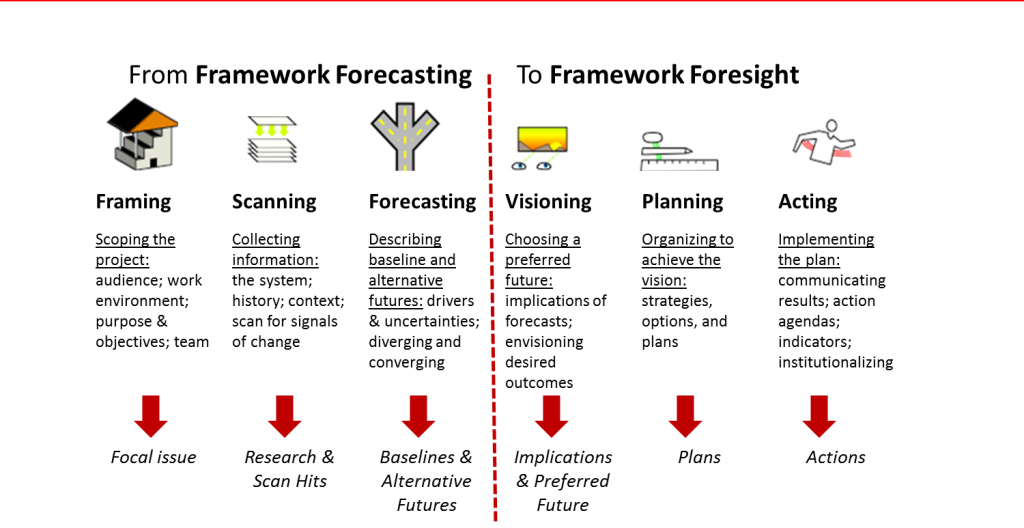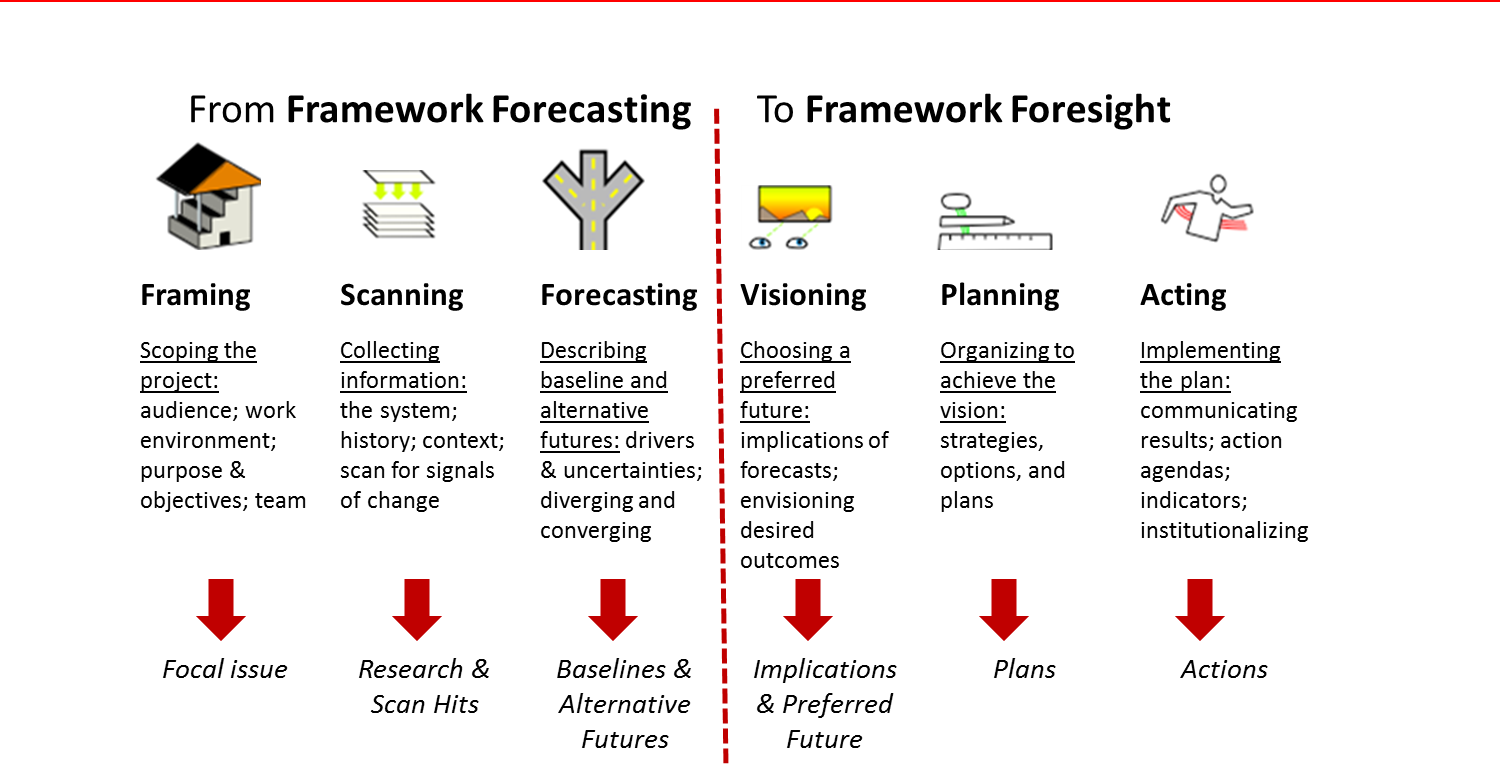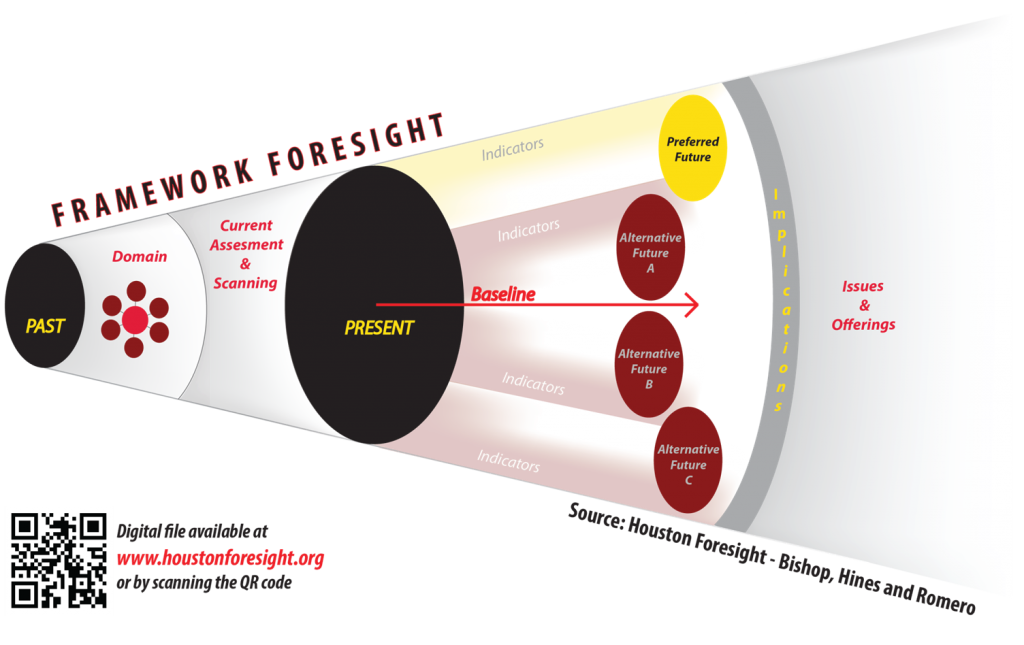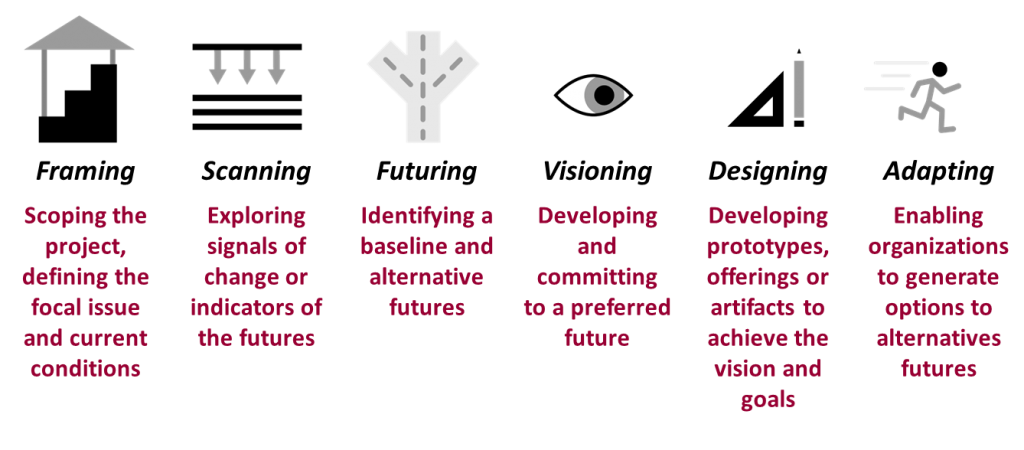Framework Foresight is the core method we use to teach students how to explore the future. It is deliberately designed to be flexible and modular to accommodate the many other great techniques out there in the world of foresight. The origins go back to Peter Bishop’s develop of Framework Forecasting in the early 2000s – as that name suggests, it basically stopped at the forecast. The update and renaming to Framework Foresight included the accommodation of the “so what” component of a foresight project. What do we do with the forecasts? The steps of visioning, planning, and acting were integrated with the “original” framing, scanning, and forecasting steps. The 1st edition of Thinking about the Future codified the integrated process. There are always some minor tweaks and refinements that are made as a method is applied. The updated process was published in Futures in 2013 (link) and a second edition of Thinking about the Future added a chapter on the integrated FF process. Along the ways a significant tweak was rendering the process into a user-friendly graphic. Then grad student Maria Romero incorporated the FF process into the cone of plausibility in a beautiful way. [Some of you will remember some of the old ugly process maps, several of which I authored!]
There are always some minor tweaks and refinements that are made as a method is applied. The updated process was published in Futures in 2013 (link) and a second edition of Thinking about the Future added a chapter on the integrated FF process. Along the ways a significant tweak was rendering the process into a user-friendly graphic. Then grad student Maria Romero incorporated the FF process into the cone of plausibility in a beautiful way. [Some of you will remember some of the old ugly process maps, several of which I authored!]
The next significant tweak (not quite an “update”) was to incorporate the language and refinements from the new APF Competency model (link). That has been ongoing the last couple of years. I’ve been keeping them together: forecasting/futuring. At some point, I’ll need to rip off the band-aid and go completely to the new language. The new competencies are below. As you’ll see, framing, scanning, and visioning stayed (with some refinement to the details of what they mean. Forecasting becomes “futuring,” planning becomes “designing,” and acting becomes “adapting.



Great approach to teaching foresight for practitioners and changemakers.